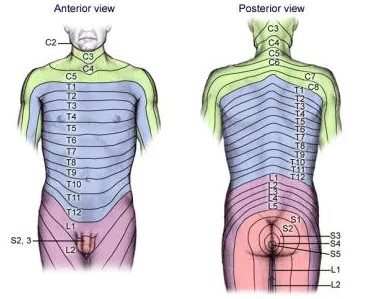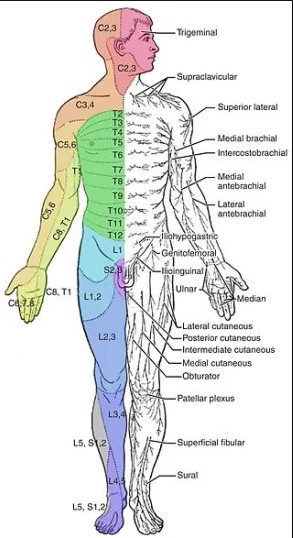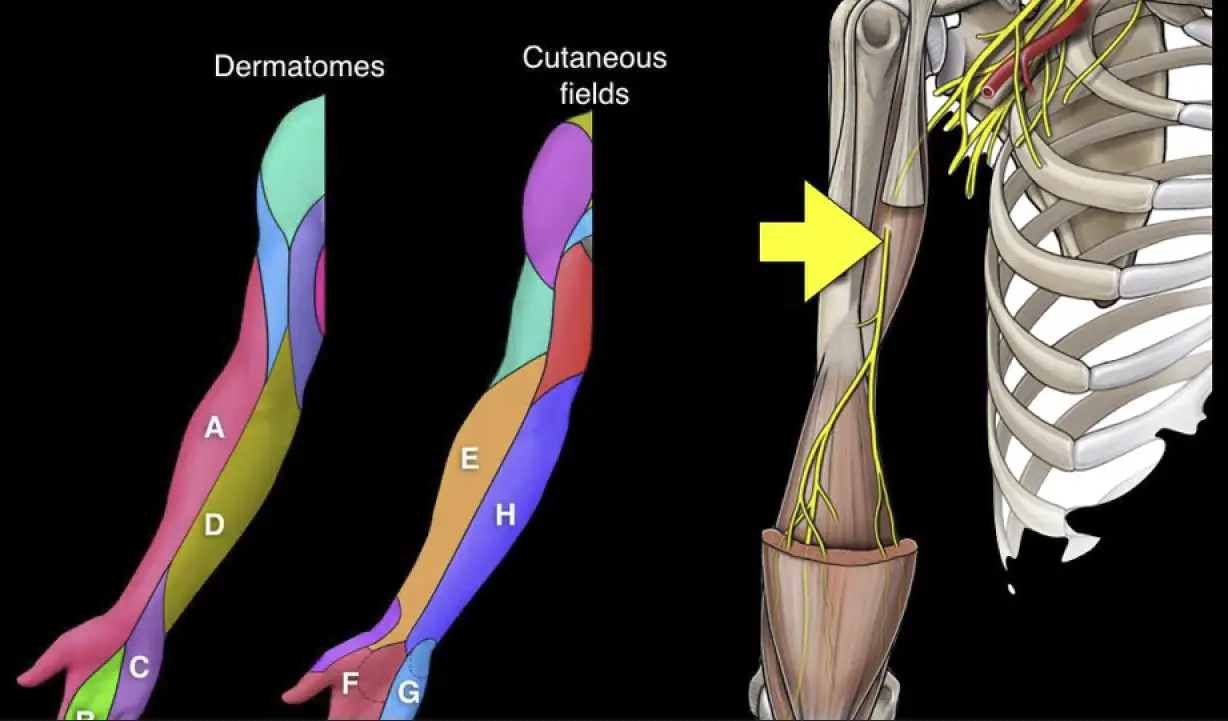The human nervous system is a complex network that ensures our body functions seamlessly, with specific parts playing pivotal roles in sensing and responding to external stimuli. Among these, dermatomes and cutaneous innervation stand out for their critical roles in sensory perception. These terms often surface in discussions around neurological function, pain management, and diagnostic procedures, yet they remain areas of confusion for many.
Dermatomes are areas of skin innervated by the sensory fibers of a single spinal nerve root, whereas cutaneous innervation refers to the distribution of nerves throughout the skin, providing sensation. The difference lies in their origin and the specificity of the sensory information they convey, with dermatomes relating directly to the spinal nerves and cutaneous innervation involving a broader network of nerve fibers.
A deep dive into these concepts reveals their significance in understanding how our body perceives touch, temperature, and pain. It also underscores the importance of these sensory maps in diagnosing and treating conditions involving nerve damage or dysfunction. By exploring the intricacies of dermatomes and cutaneous innervation, one gains insights into the sophisticated design of the human nervous system and its ability to detect and interpret a wide array of sensory inputs.


Frequently Asked Questions
What is a dermatome?
A dermatome is an area of skin that is mainly supplied by the sensory fibers of a single spinal nerve root. These regions are crucial in diagnosing spinal injuries and diseases because they can indicate the level of a spinal cord or nerve root lesion based on the area of sensory loss or altered sensation on the skin.
How does cutaneous innervation differ from dermatomal innervation?
Cutaneous innervation refers to the supply of nerve fibers to the skin, contributing to the sensations of touch, temperature, and pain. Unlike dermatomes, which are associated with a single spinal nerve root, cutaneous innervation involves a complex network of nerves that can originate from multiple spinal nerves, providing a more intricate sensation map across the body.
Why are dermatomes important in medical diagnostics?
Dermatomes play a pivotal role in medical diagnostics as they help localize neurological damage. By understanding which areas of the skin are associated with specific spinal nerves, healthcare professionals can pinpoint the location of nerve root injuries. This is particularly valuable in diagnosing conditions like herniated discs or shingles, where pain or rash distribution aligns with dermatomal patterns.
Can cutaneous nerve damage be repaired?
Repairing cutaneous nerve damage depends on the extent and cause of the injury. In some cases, peripheral nerves can regenerate, and function may be restored. Treatment options vary, including medication for pain management, physical therapy to maintain muscle strength and mobility, and, in some cases, surgery to repair nerve damage or relieve pressure on the nerve.
Conclusion
Understanding the difference between dermatomes and cutaneous innervation provides invaluable insights into the human body’s sensory capabilities and its intricate nervous system. This knowledge not only enhances our comprehension of how we interact with our environment through sensation but also plays a critical role in diagnosing and treating neurological conditions. By appreciating the nuances of these sensory maps, medical professionals can better pinpoint the origins of nerve-related issues, leading to more accurate diagnoses and effective treatment plans.
The exploration of dermatomes and cutaneous innervation is more than an academic pursuit; it is a fundamental aspect of advancing medical science and improving patient care. As research continues to unveil the complexities of the nervous system, the potential for new diagnostic tools and treatments grows, offering hope for those affected by sensory and neurological disorders.

